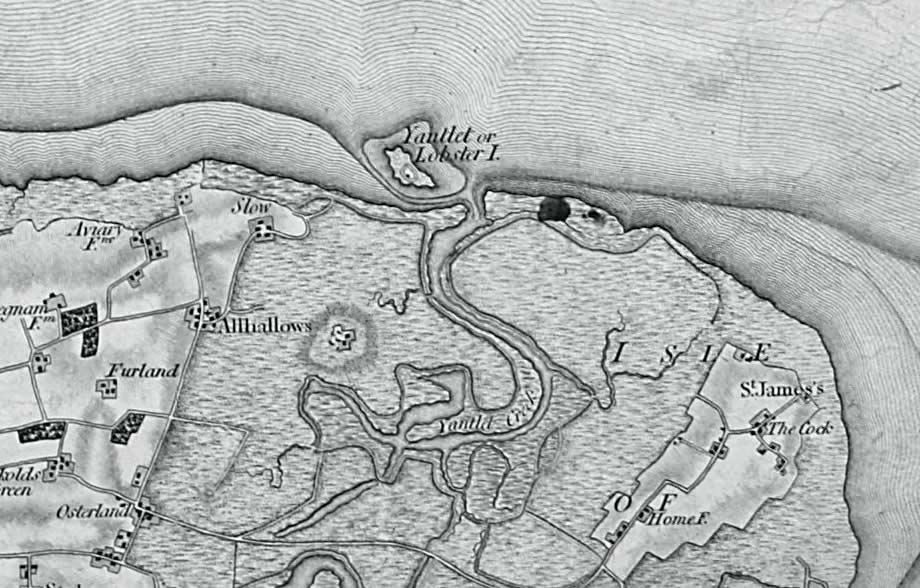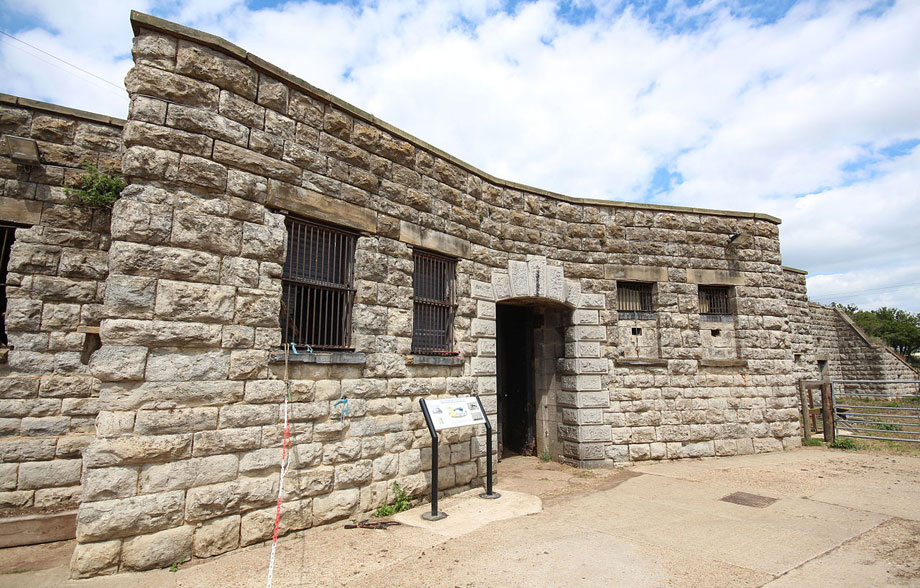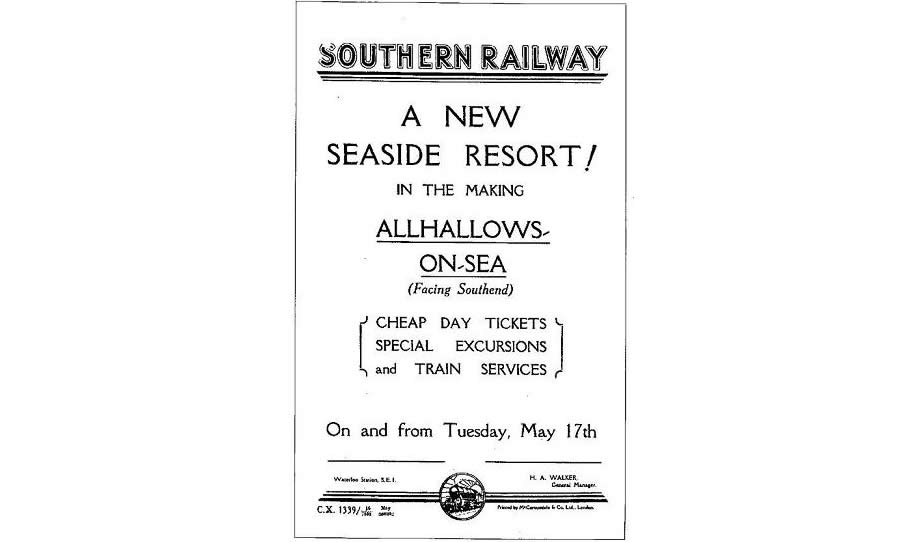Introduction • Chelsea Harbour • Mouth of the Westbourne • Custom House Stairs • Jane Parker, Wapping • Nicola White, Greenwich • The Albert Basin • Rainham, Essex • Aveley Marshes, Essex • Procter & Gamble, Thurrock • Peter Beckenham, Swanscombe • Tilbury Docks • Shornemead Fort, Kent • Coryton Refinery, Essex • Allhallows Marshes, Kent • Maplin Sands, Essex
ALLHALLOWS MARSHES are by the Kent shore towards the easternmost end of the Hoo Peninsula. These are brackish, grazing marshes with an abundance of bird life. Wading birds like redshank, teal and godwit have roosting spots along the Yantlet Creek, gangs of gulls drift in from the estuary, and hen harriers and marsh harriers sometimes loiter above, shifting in precise chess moves. In the recording on this page you can also hear the abrasive cackle of marsh frogs and the drone of swarms of yellow dung flies.
Binney Farm lies in the centre of the Marshes and it appears on maps from the early 20th century, and perhaps also as a nameless cluster of buildings in the First Series Ordnance Survey map from the start of the 19th century.

The map also shows a now-vanished feature at the mouth of the Yantlet named Yantlet or Lobster Island, since gobbled up by erosion, and a farmstead or hamlet pleasingly labelled Slow. This too is gone, but a trace was passed down in the name of Slough Fort, an artillery battery built in 1867. The fort's entrance is shown in this photo by Prioryman on Wikimedia Commons.

Archaeologists have identified two low ring-shaped mounds in the Marshes as medieval saltworks. The more southerly one is used as an animal enclosure, the other is barely distinguishable. Remains of salt production on a larger scale from the late 18th century are just across the Yantlet on the northern part of the Isle of Grain. There is no public access and much of it is designated a danger area, used by the military as a demolition range. There's a manned guard house and a police car sometimes waits at the end of a track to give chase to anyone overcome by curiosity.
The range has been in use since the end of the First World War, and its facilities were once far more extensive, with a fixed gun emplacement, a railway gun, a moveable crane, and living quarters. Much of the estuary has the sense of vanished activity and abandoned schemes, like the plans to turn Allhallows into a major seaside resort which likely would have built over or otherwise engulfed the Marshes.
In 1932 the Southern Railway extended a spur northwards from the railway line running to Grain and built Allhallows-on-Sea station. 6,500 passengers visited in the first year and the Southern Railway found this sufficiently encouraging to expand the station. But there wasn't much for people to do once they got there except gaze at the ships sailing up and down the estuary or else visit the British Pilot pub opposite the station. Guns regularly thundered unseen from the range on the Isle of Grain. It became clear that Allhallows-on-Sea would not become the next Margate and, in 1961, the station closed for good.

Since then a caravan park has gradually grown at Allhallows and today it's quite a large complex filled with things to do. This self-contained world has its own bar, the Huffkin of Hoo, plus shops, a restaurant, a crazy golf course, swimming pools and evening entertainment from cover bands with names like Destination 90s. The summertime atmosphere in the park is relaxed and gregarious. Few holidaymakers seem to see much point in wandering off very far along the shore.
Introduction • Chelsea Harbour • Mouth of the Westbourne • Custom House Stairs • Jane Parker, Wapping • Nicola White, Greenwich • The Albert Basin • Rainham, Essex • Aveley Marshes, Essex • Procter & Gamble, Thurrock • Peter Beckenham, Swanscombe • Tilbury Docks • Shornemead Fort, Kent • Coryton Refinery, Essex • Allhallows Marshes, Kent • Maplin Sands, Essex
